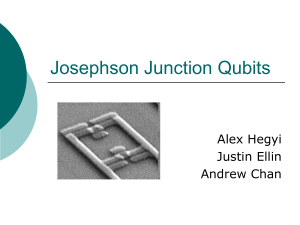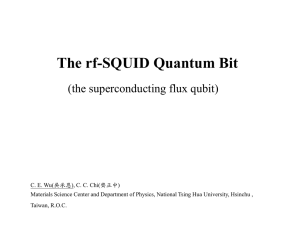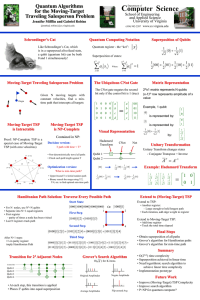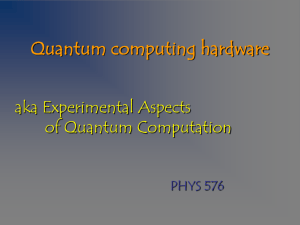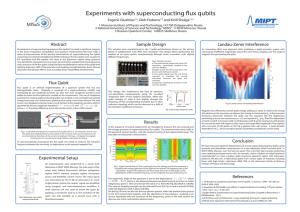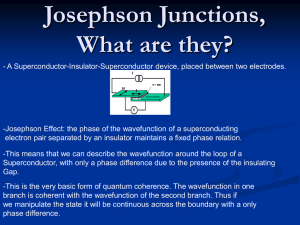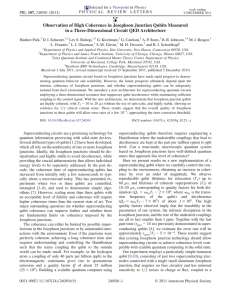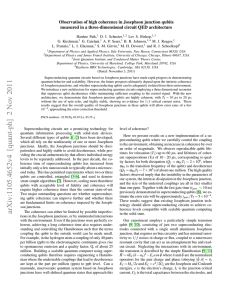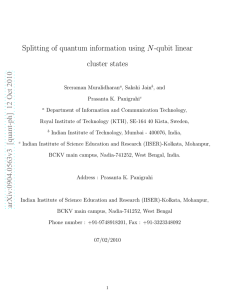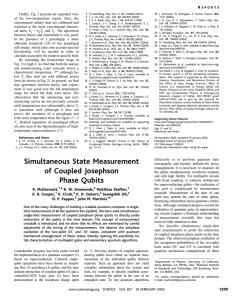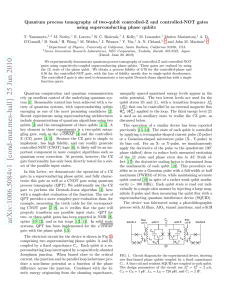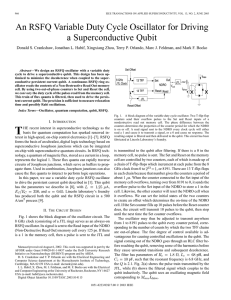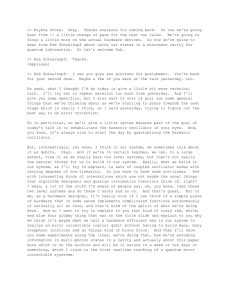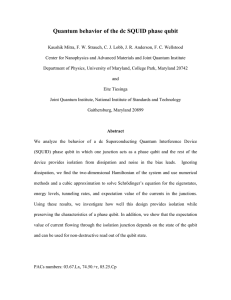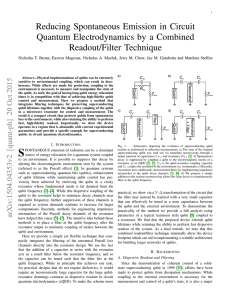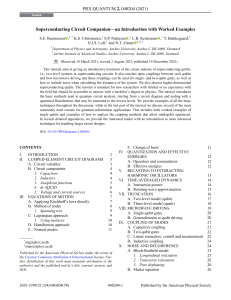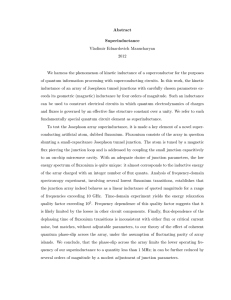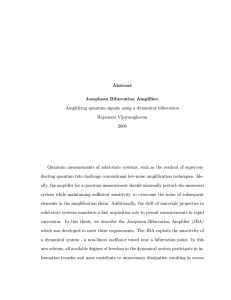Superconducting Qubits
advertisement
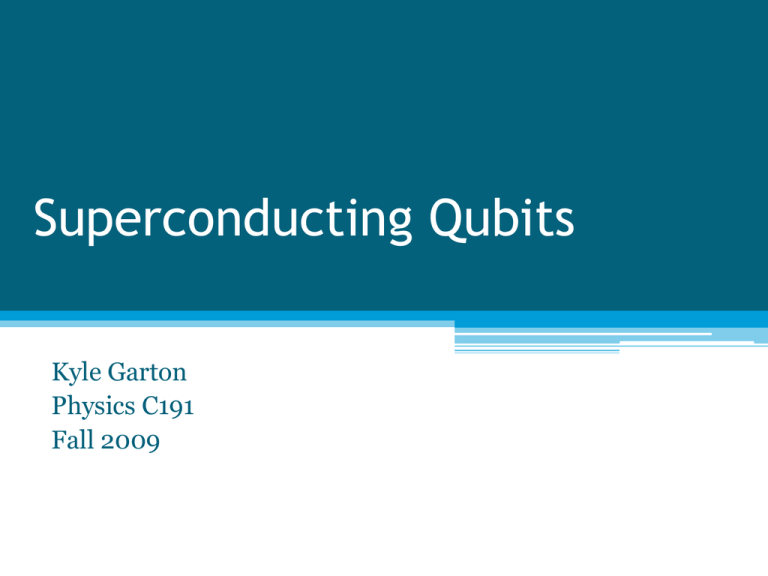
Superconducting Qubits Kyle Garton Physics C191 Fall 2009 Superconductivity • Classically electrons strongly interact with the lattice and dissipate energy (resistance) • In a superconducting state there is exactly zero resistance • External magnetic fields are expelled (Meissner Effect) Superconductivity • Fermi energy is the highest energy level occupied at absolute zero • Bardeen, Cooper, and Schrieffer (BCS 1957) provide for an even lower energy level • Electrons condense into Cooper pairs and fill these lower states • These energy levels are below the energy gap that allows for lattice interaction so there is no resistance Superconductivity Notes • Need very low temperatures to achieve superconductivity (Type I) • Currents can last thousands for billions of years • Type II (high temperature) superconductors are not explained by BCS theory Josephson Junction • An thin insulating layer sandwiched between superconductors • Current can still tunnel through thin layers • At a critical current value voltage will develop across the junction • Voltage oscillates (converting voltage to frequency) • Can also operate in inverse mode (converting frequency to voltage) Superconducting Quantum Interference Device (SQUID) Qubit Options Size Coupling with environment • Photons • Nuclear Spins • Ions • Semiconductor Spins • Quantum Dots • Superconducting Circuits Superconducting Circuits • Strong coupling to environment – short coherence times • Strong qubit-qubit coupling – fast gates Superconducting Circuits • Easy electrical access • Easily engineered with capacitors, inductors, Josephson junctions • Easy to fabricate and integrate Quantum Characteristics • How can a macroscopic device exhibit quantum properties? • LC oscillator circuit is like a quantum harmonic oscillator • L=3nH, C=10pF → f=1GHz Quantum Characteristics DiVincenzo criteria • scalable physically – microfabrication process • qubits can be initialized to arbitrary values – low temperature • quantum gates faster than decoherence time superconductivity • universal gate set – electrical coupling • qubits can be read easily – electrical lines Types of Superconducting Qubits • Charge Qubit – Cooper Pair Box • Flux Qubit – RF-SQUID • Phase Qubit – Current Biased Junction Readout • • • • Switch reading ON and OFF Controls Coupling Doesn’t Contribute Noise (ON or OFF) Strong read and repeat rather than weak continuous measurements Readout • Measurement time τm (with good signal/noise ratio) • Energy Relaxation Rate Γ1ON • Coherence Decay Rate Γ2OFF • Dead time td (time to reset device) • Fidelity (F = P00c + P11c − 1) Charge Qubit – Cooper Pair Box • Biased to combat continuous charge Qr • Cooper pairs are trapped in box between capacitor and Josephson junction • Charge in box correlates to energy states Charge Qubit – Cooper Pair Box Flux Qubit – RF-SQUID • Shunted to combat continuous charge Qr • Current in right loop correlates to energy states • Can use RF pulses to implement gates Flux Qubit – RF-SQUID Phase Qubit - Current Biased Junction • Current controlled to combat continuous charge Qr • Differences in current determines energy state Phase Qubit – Current Biased Junction Circuit Example Qubit Interaction • Easily fabricate transmission lines and inductors to couple qubits • Can be coupled at macroscopic distances Fabrication • Use existing microfabrication techniques from IC industry • Electron beam lithography for charge and flux qubits • Optical lithography for phase qubits Accomplishments • • • • • Coherence quality (Q=Tω) >2x104 Read and reset fidelity >95% All Bloch states addressed (superposition) RF pulse implements gate Scalable fabrication • Not all at the same time… Future • Active area of research • Need to simultaneously optimize parameters • New materials to improve properties • Engineering better circuits to handle noise • Local RF pulsing
